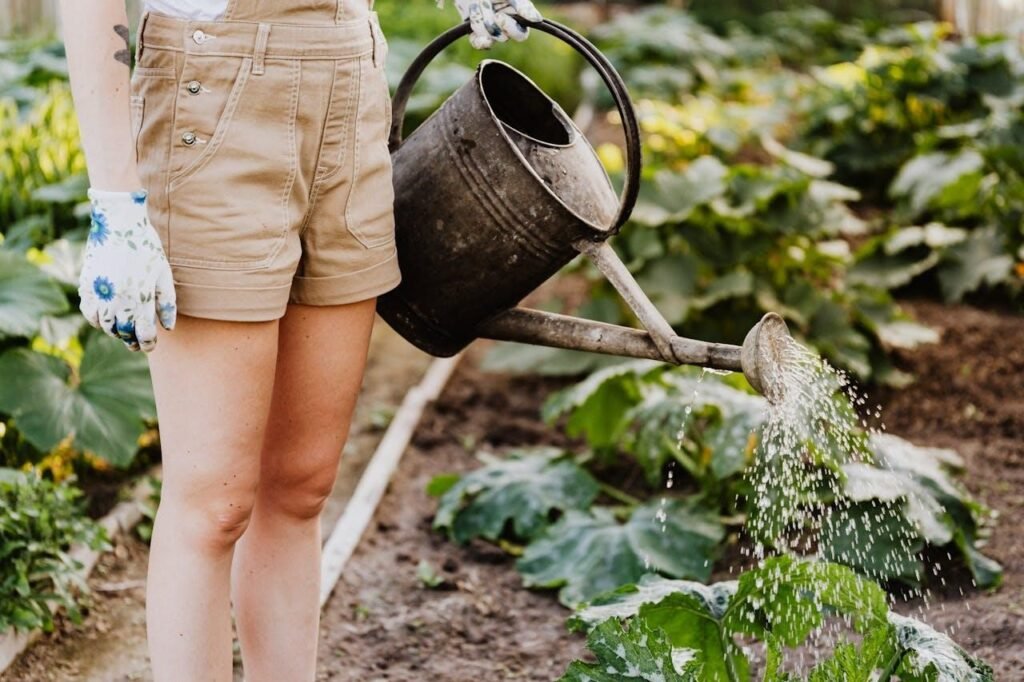In today’s fast-paced world, many people are looking for ways to slow down and enjoy life more fully. Slow gardening is a concept that encourages gardeners to take their time, enjoy the process, and connect more deeply with nature. This approach not only benefits the garden but also enhances the gardener’s well-being. In this blog, we’ll explore what slow gardening is all about and how you can adopt this mindful practice in 2024, much like how China King Menu thoughtfully curates its dishes for a satisfying and mindful dining experience.
Introduction to Slow Gardening
Slow gardening is all about taking a relaxed and thoughtful approach to gardening. Instead of rushing to complete tasks, slow gardeners savour each step, focusing on quality rather than speed. This method encourages you to work with nature, using sustainable practices and appreciating the journey of growth and change in your garden.
The idea is to create a harmonious relationship with your garden, where the process of gardening is just as enjoyable as the results. Let’s dive into the key principles of slow gardening and how you can incorporate them into your gardening routine.
1. Embrace Patience
Slow gardening teaches patience. Plants grow at their own pace, and trying to rush this natural process can lead to stress and disappointment. Accept that gardening is a long-term commitment and enjoy watching your plants develop over time.
2. Focus on Sustainability
Sustainable practices are a core part of slow gardening. Use organic methods, such as composting, mulching, and natural pest control, to nurture your garden. This not only helps the environment but also creates a healthier garden.
3. Mindful Dining
The principles of slow gardening emphasize patience, care, and an appreciation for fresh, natural produce. Similarly, at China King Menu, the focus is on offering dishes that celebrate quality ingredients and traditional preparation methods. Fresh vegetables, like those found in our Chow Choy or Vegetable Spring Rolls, reflect the beauty of seasonal eating—a value shared by slow gardeners who take pride in cultivating their own produce. Whether you’re looking for healthy lunch options or vegan appetizers, our menu embraces the same farm-to-table approach that slow gardening advocates.
4. Choose Native Plants
Native plants are adapted to your local environment and require less maintenance. They are more resistant to pests and diseases and often need less water. This makes them a perfect choice for slow gardening. For example, if you’re in Oakville, consider looking for trees for sale Oakville to find native species that will thrive in your garden.
5. Create a Wildlife-Friendly Garden
Encourage wildlife by creating habitats in your garden. Plant a variety of flowers to attract pollinators, provide bird feeders, and create shelters for small animals. A wildlife-friendly garden is vibrant and dynamic, adding to the joy of slow gardening.
6. Practice Mindful Gardening
Mindfulness is a key aspect of slow gardening. Pay attention to your senses while you garden—feel the soil, listen to the birds, and smell the flowers. This practice can be meditative and greatly enhance your gardening experience.
7. Plan and Rotate Crops
Take the time to plan your garden layout and rotate crops to maintain soil health. Crop rotation prevents soil depletion and reduces the risk of pests and diseases. Thoughtful planning is essential for a successful slow garden.
8. Use Hand Tools
Instead of relying on power tools, use hand tools whenever possible. This allows for more precise and gentle care of your plants. It also reduces noise pollution and your carbon footprint, aligning with the slow gardening philosophy.
9. Incorporate Edible Plants
Growing your own food is a rewarding part of slow gardening. Include vegetables, herbs, and fruit trees in your garden. This not only provides fresh produce but also connects you more deeply with the source of your food.
10. Seek Help When Needed
Sometimes, gardening tasks can be overwhelming. Don’t hesitate to seek professional help for larger projects. Services like tree service in Toronto can assist with tree care, and drainage installation experts can help manage water flow in your garden. This allows you to focus on the aspects of gardening you enjoy most.
Conclusion
Slow gardening is a fulfilling and sustainable approach to gardening that emphasizes patience, mindfulness, and a deep connection with nature. By adopting slow gardening practices, you can create a beautiful and thriving garden while also enhancing your own well-being.
In 2024, make a commitment to slow down and enjoy the process of gardening. Whether you’re planting native Trees for Sale Oakville or seeking professional Tree Service Bradford, remember that the journey is just as important as the destination. Slow gardening can transform your outdoor space into a sanctuary of peace and natural beauty.
FAQs
What is slow gardening?
Slow gardening is a mindful approach to gardening that focuses on enjoying the process, using sustainable practices, and connecting deeply with nature. It emphasizes patience and quality over speed.
Why should I choose native plants for my garden?
Native plants are adapted to your local environment, making them easier to care for. They require less water, are more resistant to pests, and support local wildlife, making them ideal for slow gardening.
How can I make my garden wildlife-friendly?
Create habitats by planting a variety of flowers, providing bird feeders, and creating shelters for small animals. A wildlife-friendly garden attracts pollinators and other beneficial creatures.
What are some sustainable gardening practices?
Sustainable practices include composting, mulching, using natural pest control, and conserving water. These methods help create a healthier garden and protect the environment.
How can I incorporate mindfulness into my gardening routine?
Pay attention to your senses while gardening—feel the soil, listen to the sounds, and observe the details. Taking your time and being present in the moment can make gardening a more fulfilling experience.
Should I use hand tools or power tools in slow gardening?
Hand tools are preferred in slow gardening as they allow for more precise and gentle care of plants. They also reduce noise pollution and are more environmentally friendly.
What if I need help with larger gardening tasks?
For larger tasks like tree care or drainage installation, consider hiring professionals. Tree Service Bradford and Drainage Installation experts can provide the necessary assistance, allowing you to focus on the enjoyable aspects of gardening.



